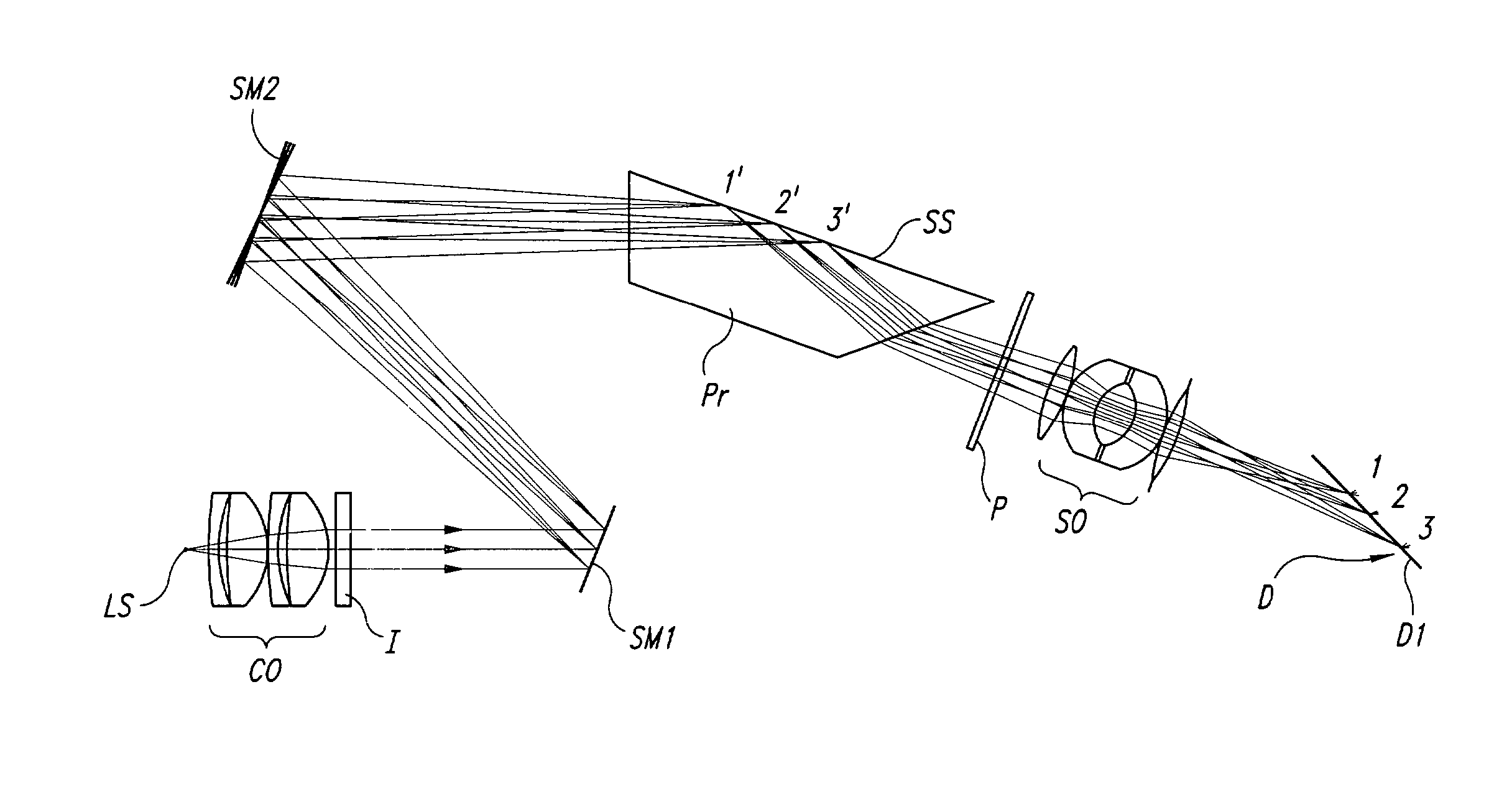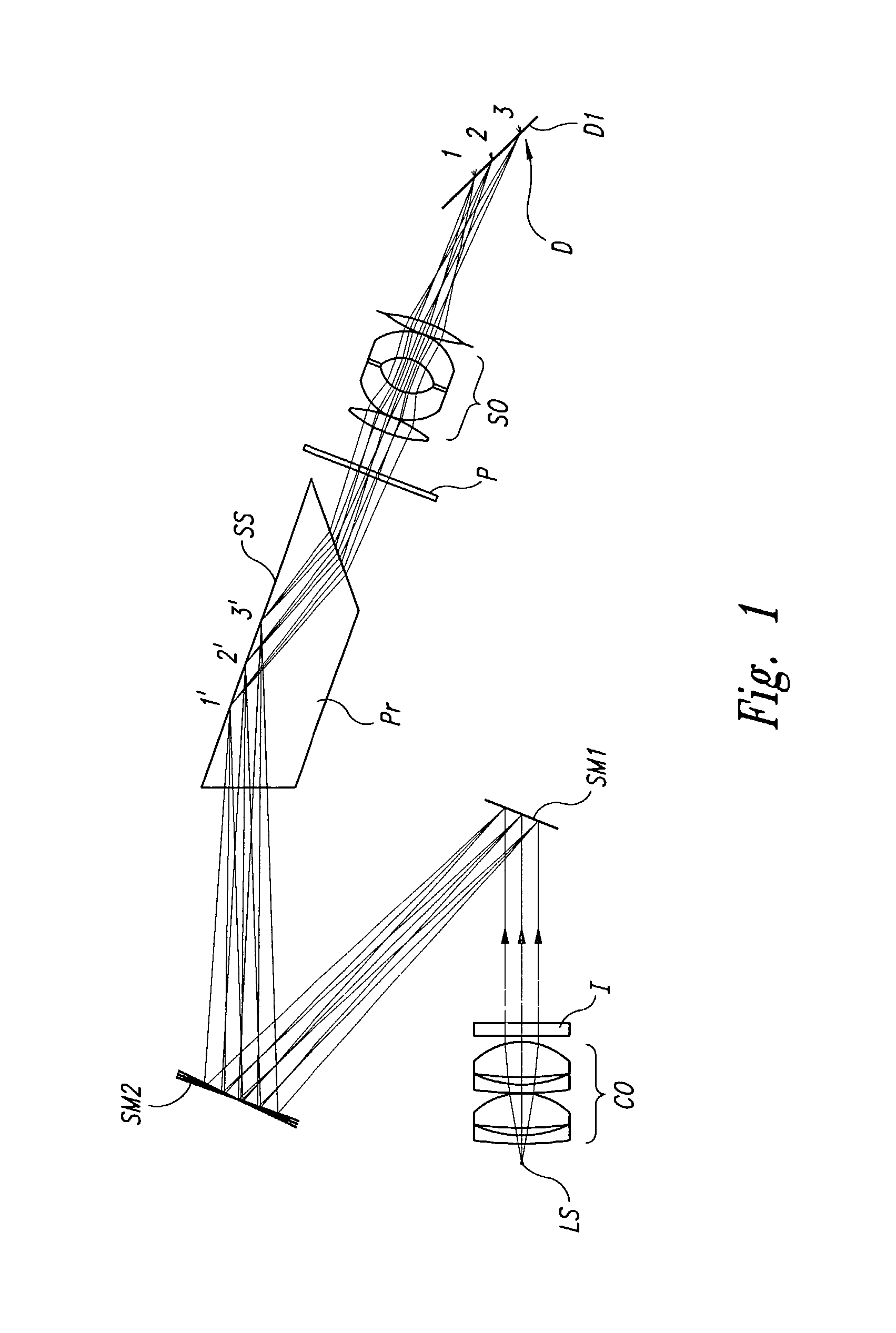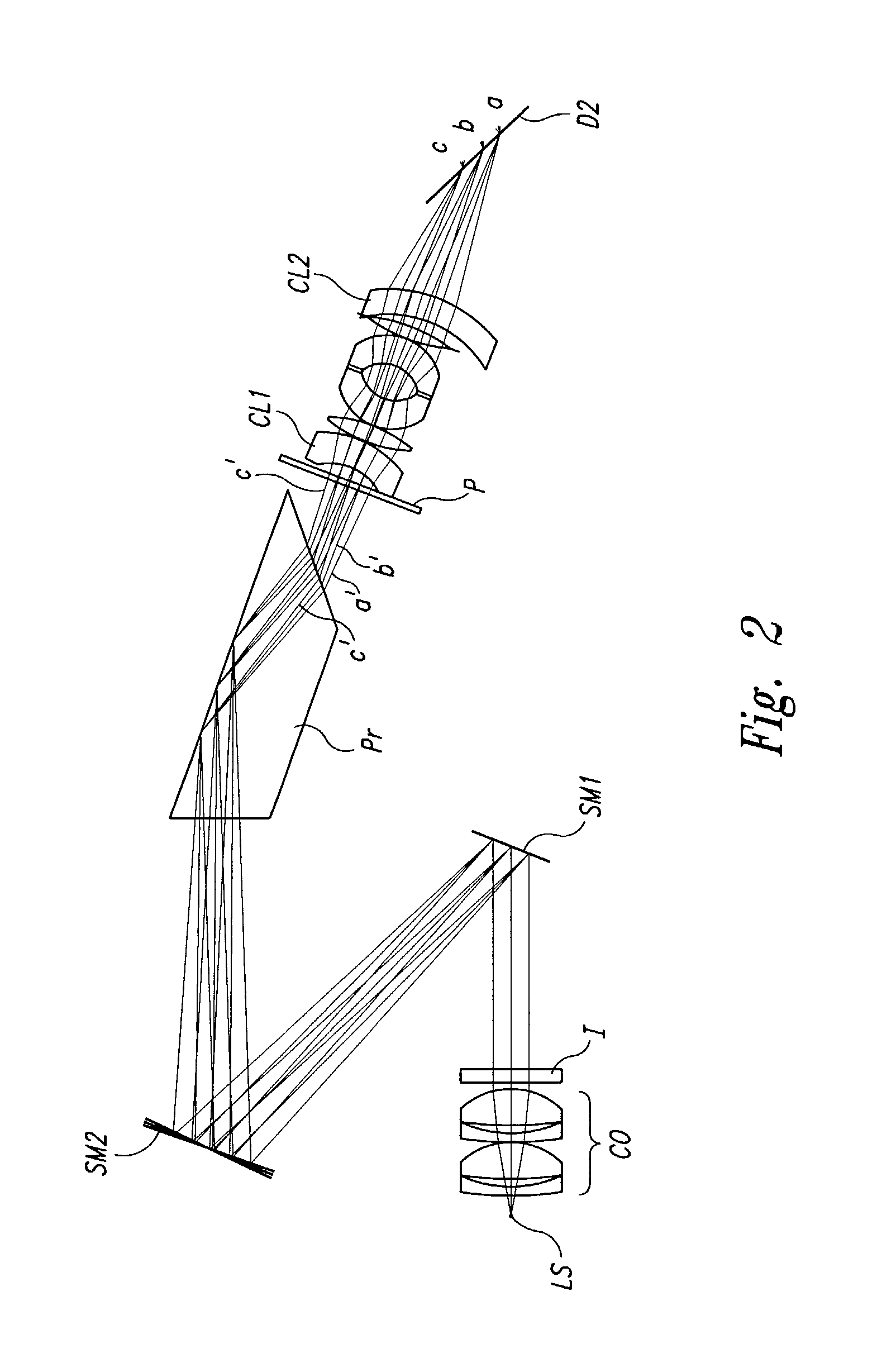Analytical method and apparatus
an optical surface and analytical method technology, applied in the direction of measuring devices, instruments, scattering properties, etc., can solve the problems of limited technique, one-dimensional sensor area, spr-based methods used,
- Summary
- Abstract
- Description
- Claims
- Application Information
AI Technical Summary
Benefits of technology
Problems solved by technology
Method used
Image
Examples
Embodiment Construction
[0242] The principle of the present invention was verified as demonstrated in FIGS. 24a-24d, by use of a pivotally moving illumination system similar to the one described in FIG. 22, using a light emitting diode of center-wavelength 766 nm, lenses and a sheet-polarizer providing p-polarized collimated beam of diameter 8 mm, an interference filter of bandwidth 3 nm, an imaging embodiment according to FIGS. 3, 4, and 5, and a CCD-photodetector matrix connected to a video-recorder. The obscuration, imaged as the dark right part in FIGS. 24a-24d covering about 25% of the image, is positioned at the interference filter I, FIG. 23, decentered in relation to the beam cross-section, so that it covers about 15% of the beam width.
[0243] FIGS. 24a-24d show a series of SPR-images of a sensor surface exposed to rinse solution in a flow cell, the sensor surface consisting of sixteen zones of various refractive index (optical thickness), zone size 0.5 mm.times.0.5 mm, each image at a specific angl...
PUM
 Login to View More
Login to View More Abstract
Description
Claims
Application Information
 Login to View More
Login to View More - R&D
- Intellectual Property
- Life Sciences
- Materials
- Tech Scout
- Unparalleled Data Quality
- Higher Quality Content
- 60% Fewer Hallucinations
Browse by: Latest US Patents, China's latest patents, Technical Efficacy Thesaurus, Application Domain, Technology Topic, Popular Technical Reports.
© 2025 PatSnap. All rights reserved.Legal|Privacy policy|Modern Slavery Act Transparency Statement|Sitemap|About US| Contact US: help@patsnap.com



